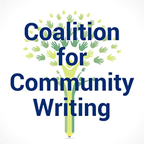Document Type
Article
Abstract
This article examines what a pedagogy of public rhetoric and community literacy might look like based on an understanding of twentieth century Mexican American civil rights rhetoric. The inductive process of examining archival materials and conducting oral histories informs this discussion on the processes and challenges of gaining civic inclusion. I argue that writing can be both a healing process and an occasion for exercising agency in a world of contingency and uncertainty. To illustrate, I describe several key events shaping the evolution of the post-World War II Mexican American civil rights movement in New Mexico. Taking a case study approach, I begin this chapter by examining the civic discourses of one prominent New Mexico leader in the post-World War II civil rights movement: Vicente Ximenes. As a leader, Ximenes confronted critical civil rights issues about culture and belonging for over fifty years beginning in Albuquerque, New Mexico. It is a historical moment worth revisiting. First, I set the stage for this examination about writing, citizenship, and civic literacy by analyzing two critical rhetorical moments in the life of this post World War II civil rights activist. Secondly, I connect the Ximenes legacy to a growing movement at the University of New Mexico and the ways that we are making critical responses to current issues facing our local communities in New Mexico. By triangulating social acts of literacy, currently and historically, this article offers organizing principles for Composition teachers and advocates of community literacy serving vulnerable communities in their various spheres of practice.
Recommended Citation
Kells, Michelle Hall. “What’s Writing Got to Do with It?: Citizen Wisdom, Civil Rights Activism, and 21st Century Community Literacy.” Community Literacy Journal, vol. 7, no. 1, 2012, pp. 89–110, doi:10.25148/clj.7.1.009382.

